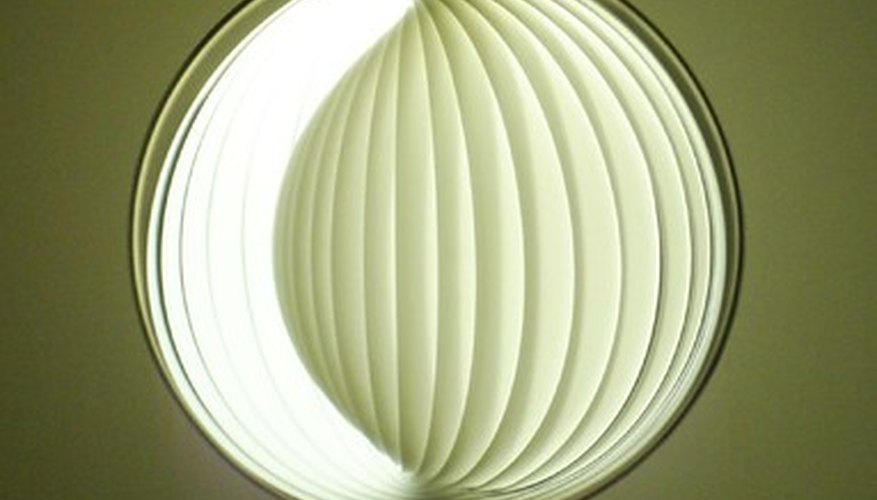Touch lamps use electrical devices to sense when someone touches them, and then sends signals that open circuits to the light bulbs, turning them on. Some use conductive metals that sense the electromagnetic field produced by the human body and respond by switching on or off. Other use RF signals that are slightly distorted by the human touch.
Failures
Sometimes touch lamps fail altogether. Unless this is caused by a simple burnt-out bulb, chances are that a power surge has overloaded the circuitry necessary for the lamp to operate. In this case, not much can be done except replace the lamp.
Stuck On
Touch lamps being stuck on is usually a sign of problems with the thyristor. The thyristor is a type of triode, or a diode with a control panel that is built to respond to electrical signals. Generally more than one of them is used in a touch lamp to control how the light turns on and off. If a thyristor fails, the lamp can either be replaced or the internal system can be replaced with an external touch-sensitive box.
- Touch lamps being stuck on is usually a sign of problems with the thyristor.
- The thyristor is a type of triode, or a diode with a control panel that is built to respond to electrical signals.
RF Versions
In RF touch lamps, the lamp's system responds to external changes via an oscillator, which adjusts the RF signal based on electrical signals sent by a touch, which is in turn affected by current in the human body. This system can sometimes pick up other types of energy, though, which causes the signal to change and may turn the lamp on or off on its own. This is usually caused by strong, competing radio signals sent by nearby radios or other devices.
Bulbs
Bulbs should always be tested in touch lamps, primarily because the electric current in touch lamps is much rougher on bulbs than normal lamp systems. With incandescent bulbs the current flowing through the filament is not as precisely controlled, and small malfunctions in the lamps system can make a large difference to the bulb's materials. Voltage surges may also instantly burn out bulbs, so an unexpectedly burnt-out bulb may be a sign of other damage in the lamp.
Capacitors
Capacitors hold and regulate electrical charges as needed, and are another important part of touch lamps. Capacitors need carefully calibrated metals in order to maintain the proper fields needed to hold the charge, and in time heat can eventually disrupt capacitors until they stop working. In time, the light bulb can generate enough heat to dry out capacitors, which then need to be replaced.
